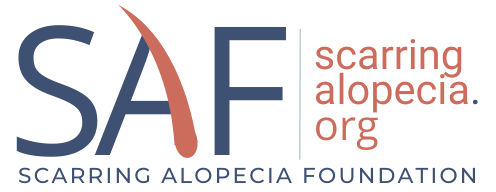Dutasteride for patients with frontal fibrosing alopecia
Article summary by Ogechi Ezemma | MD Candidate 2024 | The Warren Alpert Medical School of Brown University
Frontal fibrosing alopecia (FFA) is a scarring hair loss that is characterized by hairline regression and loss of hair elsewhere on the body, such as the eyebrows.1 Currently, there are no FDA-approved treatments for FFA. Common medications include topical therapies such as corticosteroids, tacrolimus, pimecrolimus, minoxidil, and tofacitinib, and systemic therapies like hydroxychloroquine, doxycycline, and oral corticosteroids. Dutasteride is a potent inhibitor of the 5-alpha reductase enzyme of hair follicles. It has shown promising results in treating FFA in a few studies.3 Pindado-Ortega et al. conducted a study in a large group of patients looking at the efficacy of dutasteride in treating FFA compared with other systemic treatments or no systemic treatments at all.4
The study included 224 patients with a confirmed diagnosis of FFA. One hundred and forty-eight patients received dutasteride, 56 received no systemic treatment, and the rest received other oral treatments including finasteride, hydroxychloroquine, doxycycline, and isotretinoin. All patients were using topical minoxidil and clobetasol propionate. Therapeutic response was evaluated by measuring hairline recession every 6 months.
Results showed that there were significant differences in the percentage of hairline stabilization after 12 months of treatment in patients treated with dutasteride. Hairline regression in the frontal, right, and left temporal regions stabilized by 62, 64, and 62% respectively, compared to other systemic treatments (disease stabilized by 60, 35, and 35%) and no systemic treatment (disease stabilized by 30, 41, and 38%). In addition, increasing doses of dutasteride significantly improved the change of hairline stabilization. Weekly treatment of 5 or 7 doses of 0.5mg dutasteride (2.5mg-3.5mg/week) showed higher response rates. Dutasteride was well tolerated in all patients.
In summary, the study by Pindado-Ortega et al. shows that dutasteride can be beneficial in stabilizing hair loss recession in FFA patients.
See full article here.
References
- Ross EK, Tan E, Shapiro J. Update on primary cicatricial alopecias [published correction appears in J Am Acad Dermatol. 2005 Sep;53(3):496]. J Am Acad Dermatol. 2005;53(1):1-40. doi:10.1016/j.jaad.2004.06.015
- Ho A, Shapiro J. Medical therapy for frontal fibrosing alopecia: A review and clinical approach. J Am Acad Dermatol. 2019;81(2):568-580. doi:10.1016/j.jaad.2019.03.079
- Murad A, Bergfeld W. 5-alpha-reductase inhibitor treatment for frontal fibrosing alopecia: an evidence-based treatment update. J Eur Acad Dermatol Venereol. 2018;32(8):1385-1390. doi:10.1111/jdv.14930
- Pindado-Ortega C, Saceda-Corralo D, Moreno-Arrones ÓM, et al. Effectiveness of dutasteride in a large series of patients with frontal fibrosing alopecia in real clinical practice. J Am Acad Dermatol. 2021;84(5):1285-1294. doi:10.1016/j.jaad.2020.09.093
